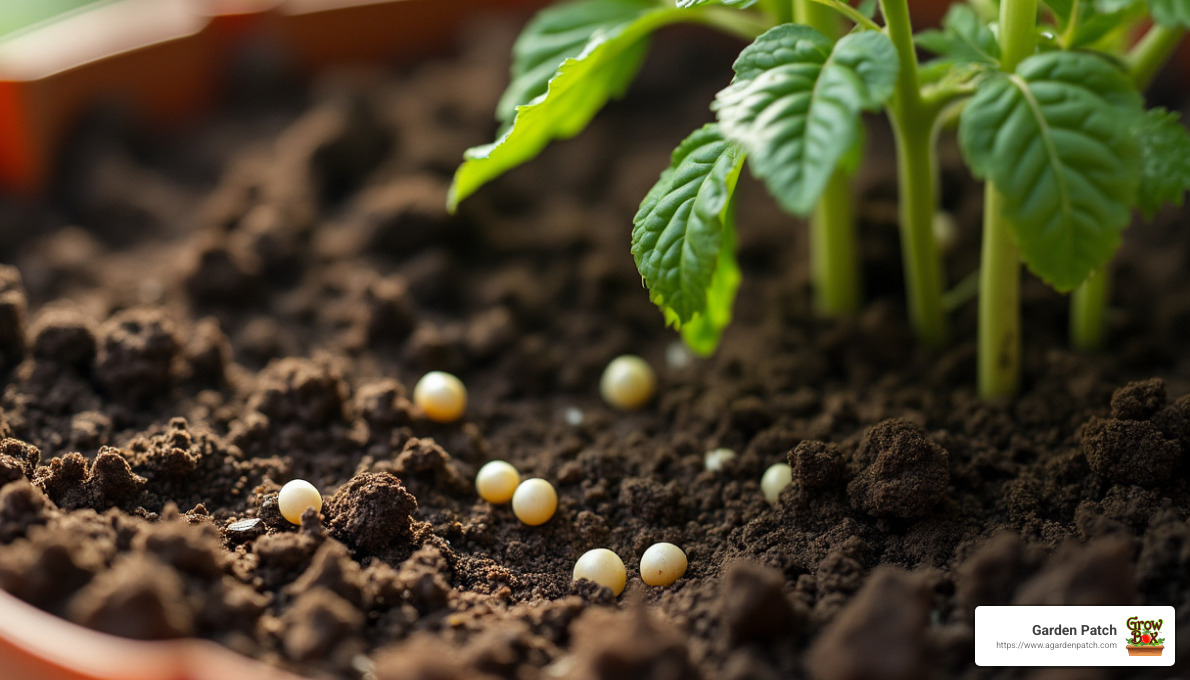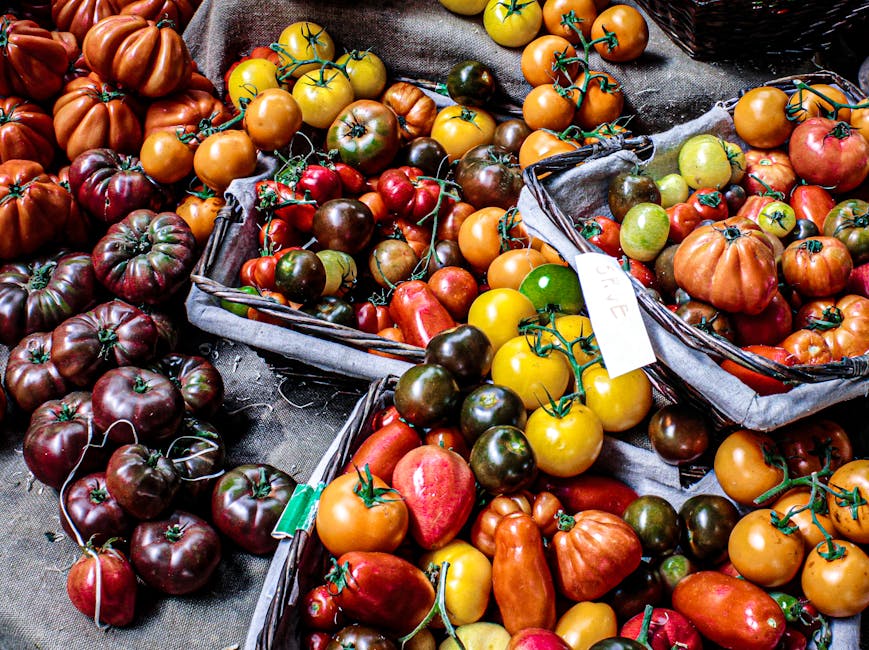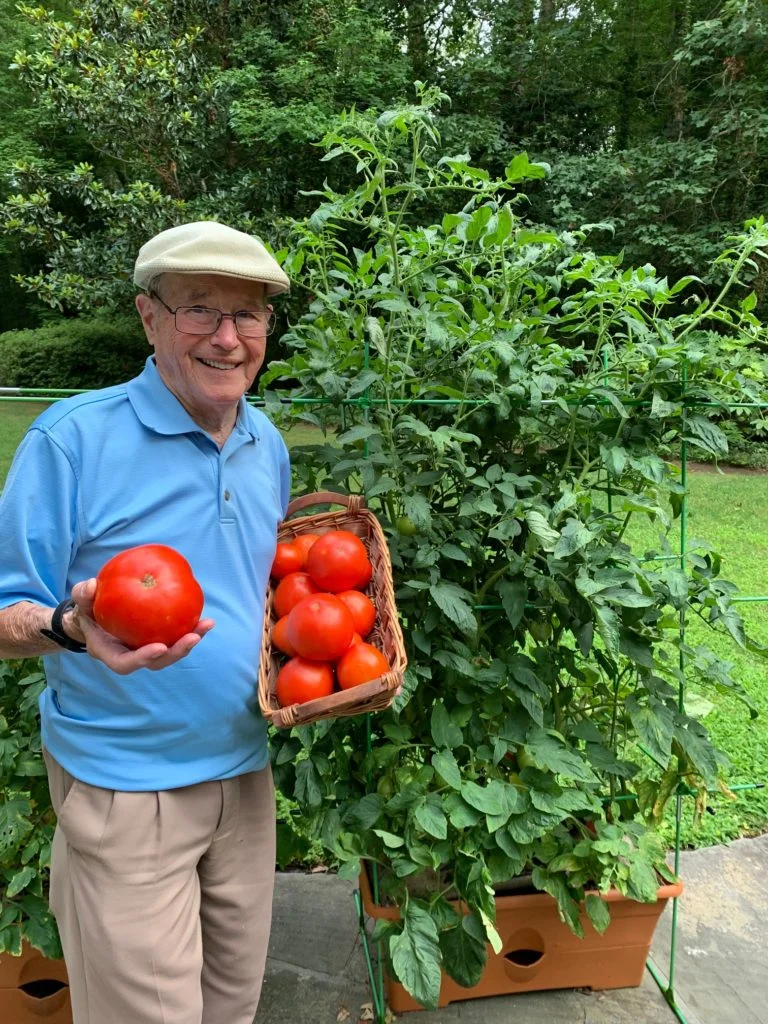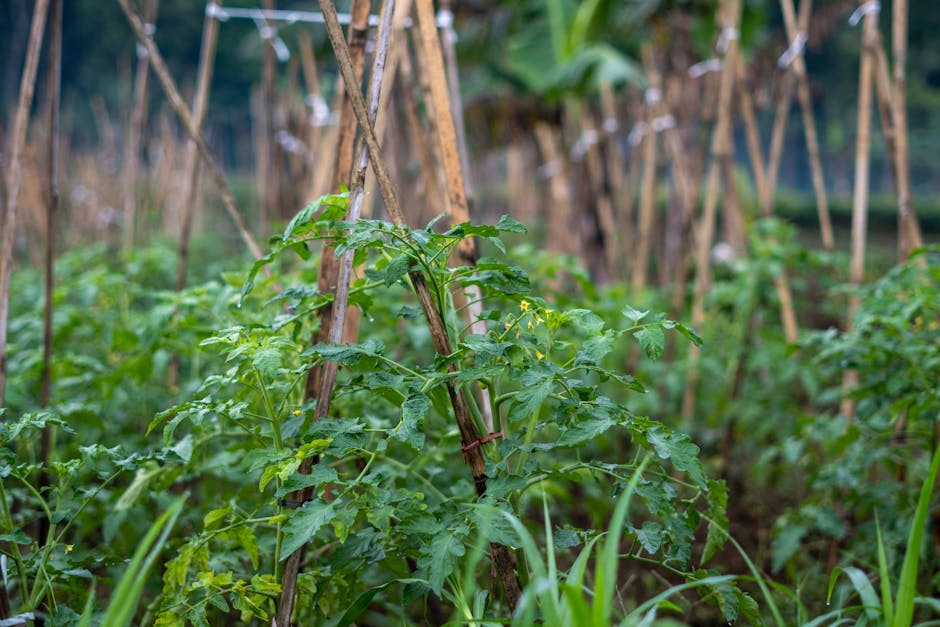Tips for planting tomato seeds begin with simplicity and ease. Ensure success by using quality potting soil, maintaining consistent moisture, and providing adequate light. It’s essential to space seeds apart to prevent overcrowding. Here’s a quick breakdown to get you started:
- Use quality potting soil: Opt for soil that allows good drainage.
- Maintain consistent moisture: Avoid over or under-watering.
- Provide adequate light: Natural sunlight or grow lights will suffice.
- Avoid overcrowding: Ensure enough space for each seed.
Growing tomatoes from seed can be a rewarding experience, and it doesn’t have to be overwhelming with the right approach. The magic of freshly ripened tomatoes awaits those who accept this journey.
I’m Bill Vandeven, and with my background in gardening and experience in offering practical tips for planting tomato seeds, I’m here to guide you with enthusiasm and ease. Transitioning now into preparing for planting, it’s crucial to understand the timing and setup for successful growth. Let’s dig into this as we ensure your gardening journey is off to a fruitful start.

Preparing for Planting
Before you dive into planting your tomato seeds, a bit of preparation goes a long way. Let’s set the stage for your garden triumph by focusing on some key steps: understanding your final frost date, selecting the right seed-starting mix, choosing proper containers, and ensuring a clean start.
Know Your Final Frost Date
The first step to a successful tomato garden is timing. Knowing your area’s average last frost date is essential for planning when to start your seeds indoors. The final frost date helps you avoid planting too early, which can lead to frost damage. You can easily find this date through an online search or by checking with local seed companies and gardening groups. This timing ensures that your seedlings are ready to move outdoors without the risk of frostbite.
Choose the Right Seed-Starting Mix
A quality seed-starting mix is the foundation of strong seedlings. Opt for a mix that is light, airy, and retains moisture without becoming waterlogged. This ensures that your seeds have the perfect environment to germinate and grow. A well-moistened mix before planting helps create good contact between the seeds and the soil, promoting healthy growth.
Select Suitable Containers
Containers play a crucial role in the early stages of your tomato plants. Use small pots or seed-starting trays that allow for proper drainage. Consider using biodegradable pots, which can be directly planted into the soil, minimizing root disturbance. The right container will support your seedlings as they develop strong roots and prepare for transplanting.
Ensure a Clean Start
Starting with clean equipment is vital to prevent diseases that could harm your seedlings. Clean your pots and tools with a mild bleach solution to eliminate any lingering pathogens. This step is often overlooked but is critical for ensuring a healthy start for your plants.
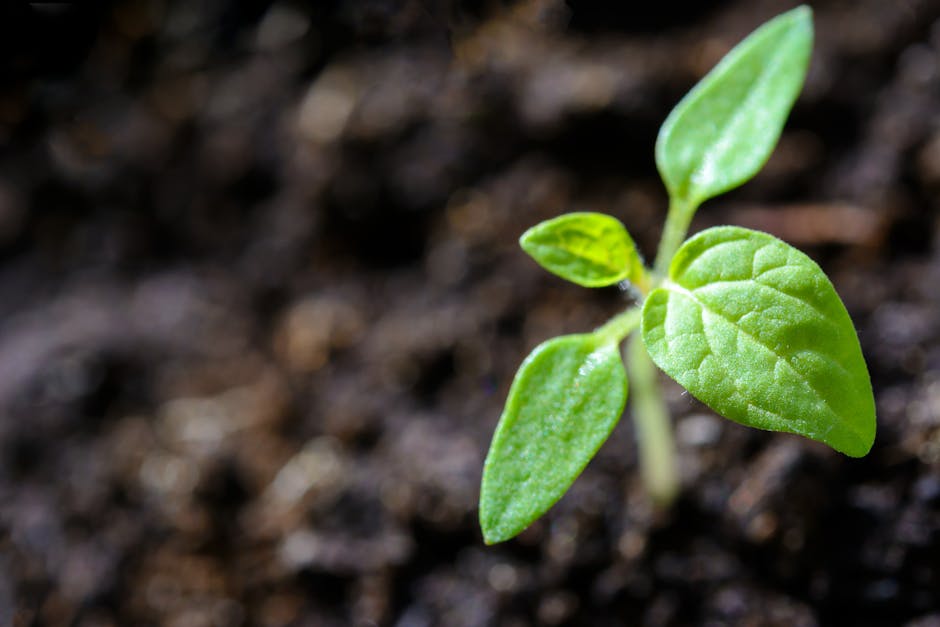
With these preparations in place, you’re setting your garden up for success. Each step, from understanding your final frost date to ensuring a clean start, contributes to a thriving garden. Now, let’s move forward to the next stage of your gardening journey: caring for your tomato seedlings.
Tips for Planting Tomato Seeds
Planting tomato seeds is an exciting step in your gardening journey. To ensure success, let’s focus on some essential tips: sowing depth, watering, warmth, and light.
Sowing Depth
When it comes to sowing tomato seeds, depth matters. Aim to cover each seed with a thin layer of potting soil. A general rule of thumb is to cover the seed with soil about the same thickness as the seed itself, up to about a quarter-inch deep. This ensures the seed is in contact with the soil, promoting uniform germination. Too deep, and your seeds might struggle to grow.
Watering
Watering is crucial for your seeds’ success. Start by gently moistening the soil before planting. This helps the seeds settle in nicely. Once planted, continue watering carefully. Avoid strong jets of water that can displace seeds. Instead, consider bottom watering by placing the container in a tray of water. This allows water to wick up through the soil, keeping it evenly moist without disturbing the seeds. If you prefer top watering, use your finger to slow the water flow from a watering can.
Warmth
Tomato seeds love warmth, which is vital for germination. Aim to keep the soil temperature between 70-80°F (21-27°C) for optimal results. You can use a heat mat under your seed trays to maintain consistent warmth. This little boost can make a big difference in how quickly and uniformly your seeds sprout.
Light
Once your seeds start to sprout, light becomes their best friend. Tomato seedlings need plenty of light to grow strong and compact. If you have a sunny, south-facing window, place your seedlings there. If natural light is limited, consider using fluorescent shop lights. These don’t have to be high-end or full-spectrum lights; simple fluorescent lights work just fine. Keep them on for about 16 hours a day using a timer. If your lights aren’t adjustable, prop up your trays to bring seedlings closer to the light source.

By following these tips for planting tomato seeds, you’re setting the stage for healthy, thriving plants. With just the right depth, careful watering, consistent warmth, and ample light, your tomato seedlings will be ready to grow strong and fruitful. As you nurture these young plants, you’ll be well on your way to a bountiful harvest.
Next, let’s dive into the care and maintenance of your tomato seedlings, ensuring they continue to thrive and grow.
Caring for Tomato Seedlings
Once your tomato seeds have sprouted, it’s time to focus on nurturing these young plants to ensure they thrive. Here are some essential steps for caring for tomato seedlings: thinning, fertilizing, transplanting, and ensuring proper air circulation.
Thinning
Thinning is a crucial step to ensure each seedling has enough space to grow strong. When multiple seeds are planted together, it’s important to select the healthiest seedling and remove the others. Use a pair of scissors to snip the weaker seedlings at the soil line. This prevents disturbing the roots of the chosen plant. It’s better to have a few strong plants than a crowd of weak ones.
Fertilizing
As your seedlings develop their second set of true leaves, it’s time to start fertilizing. This boosts their growth and prepares them for life outside. Use a water-soluble fertilizer mixed at half the recommended rate. Fertilize once or twice a week to avoid overloading the delicate root systems. This gentle feeding provides the nutrients your seedlings need to grow robust and healthy.
Transplanting
When your seedlings outgrow their pots, it’s time to transplant them into larger containers or directly into the garden. Wait until after the last frost date to avoid damage from unexpected cold. If you’re moving them outdoors, harden them off first by gradually exposing them to outdoor conditions over a week. This helps them adjust to the new environment smoothly. Remember to plant them deeply, as tomatoes can develop roots along their stems, leading to a stronger plant.
Air Circulation
Good air circulation is essential for preventing fungal diseases and promoting strong stems. If your seedlings are indoors, consider using a small fan to gently move the air around them. This mimics outdoor conditions and strengthens the plants. Adequate space between seedlings also helps air circulate freely. A little breeze can go a long way in keeping your plants healthy.
By following these steps for caring for tomato seedlings, you’re setting your plants up for success. With proper thinning, fertilizing, transplanting, and air circulation, your seedlings will grow into strong, productive plants.
Next, let’s explore common mistakes to avoid during the planting process to ensure a smooth and fruitful gardening experience.
Common Mistakes to Avoid
Starting tomato seeds can be a rewarding experience, but there are a few common pitfalls that can hinder your success. Let’s explore these mistakes and how to avoid them for a bountiful harvest.
Early Planting
It might be tempting to start your tomato seeds as soon as the first signs of spring appear. However, early planting can lead to leggy, weak seedlings that struggle to thrive. Tomatoes love warmth and light, and starting them too early often means they’ll miss out on these essentials. Instead, wait until the last frost date has passed and ensure your growing environment is warm and well-lit for optimal growth.
Poor Seedlings
Selecting healthy seedlings is crucial for a successful tomato crop. Avoid planting seeds from weak or poor seedlings, as they often struggle to grow strong. Look for seedlings that are short and stocky with dark green leaves. If your seedlings appear leggy or have yellowing leaves, consider starting over with a fresh batch. Healthy seedlings are the foundation for productive tomato plants.
Shallow Planting
Tomatoes have a unique ability to grow roots along their stems. Shallow planting misses out on this advantage, leading to weaker root systems. When transplanting your seedlings, plant them deep, burying a portion of the stem. This encourages robust root development and results in stronger, more resilient plants.
Inconsistent Watering
Consistent watering is key to growing healthy tomatoes. Inconsistent watering can lead to a host of problems, including blossom end rot and split fruits. Aim to water deeply once or twice a week, ensuring the soil remains consistently moist but not waterlogged. For container-grown tomatoes, you might need to water more frequently, especially during hot summer days. The goal is to keep the soil evenly moist for happy, thriving plants.
By steering clear of these common mistakes—early planting, poor seedlings, shallow planting, and inconsistent watering—you’re setting the stage for a successful tomato-growing season. With a little care and attention, you’ll soon be enjoying juicy, homegrown tomatoes straight from your garden.
Next, we’ll tackle some frequently asked questions about planting tomato seeds to further improve your gardening knowledge.
Frequently Asked Questions about Planting Tomato Seeds
What is the best method for starting tomato seeds?
To start your tomato seeds off right, focus on deep planting. Tomatoes are unique because they can grow roots all along their stems. When you plant them deep, you encourage a strong root system, which makes your plants more resilient and productive. Bury a portion of the stem when transplanting seedlings to maximize root development.
Using a slow-release fertilizer can also work wonders. This ensures your seedlings have a steady supply of nutrients as they grow. Look for fertilizers specifically designed for tomatoes to give your plants the best start possible.
How can I germinate tomato seeds faster?
Speed up germination by using a heat mat. Tomato seeds love warmth, and a heat mat can provide the consistent soil temperature they need to sprout quickly. Aim for a soil temperature of about 70-80°F (21-27°C) for optimal results. This warmth mimics the ideal growing conditions, encouraging seeds to germinate faster and more uniformly.
What are the common mistakes in growing tomatoes?
Timing is everything when it comes to planting tomatoes. Start seeds too early, and you risk having weak, leggy plants. Too late, and your tomatoes may not ripen before the first frost. Stick to the recommended planting dates for your area to ensure success.
Watering is another common challenge. Both overwatering and underwatering can harm your plants. Consistent, deep watering helps prevent issues like blossom end rot and keeps your plants healthy.
Don’t forget about staking your tomato plants. As they grow, tomatoes can become heavy and need support to prevent them from toppling over. Use stakes, cages, or trellises to keep them upright and ensure good air circulation.
By following these tips and avoiding common pitfalls, you’ll be well on your way to growing thriving tomato plants with ease. Up next, we’ll explore the specific care tips for your tomato seedlings to ensure they continue to grow strong and healthy.
Conclusion
Congratulations! You’ve now got the essential tips for planting tomato seeds and caring for your seedlings. But why stop there? Let’s make gardening even easier and more productive with the Garden Patch™ GrowBox™. Our innovative system is designed to take the guesswork out of gardening, ensuring you achieve high yields with minimal effort.
Imagine picking fresh, juicy tomatoes right from your own garden without the hassle of constant watering or fertilizing. The GrowBox™ is a self-watering, self-fertilizing planter that does the hard work for you. With its patented Nutrient Patch™ system, your plants receive consistent nutrition throughout the growing season. No more worries about overwatering or underfeeding.
Whether you’re a seasoned gardener or just starting out, the GrowBox™ makes it simple to grow a bountiful harvest. Our fool-proof system is backed by science and loved by gardeners everywhere. Plus, with our 1-Year Risk-Free Trial, you can try it out with confidence.
Ready to transform your gardening experience? Find more about how to grow tomatoes effortlessly with the Garden Patch™ GrowBox™. You’ll be amazed at how easy and rewarding gardening can be!
Join our community of happy gardeners and start enjoying the fruits of your labor. With the Garden Patch™ GrowBox™, success is not just a possibility—it’s a guarantee!

